Your Journey to the Skies: Multi Engine Rating Accelerated Online Course
Imagine slicing through clouds with the roar of twin engines at your command. That’s the thrill awaiting you with a multi-engine rating. But let’s face it, traditional flight training can be a slow climb. That’s where an accelerated online course propels you to new heights, fast. It’s your ticket to mastering the skies, on your schedule, from anywhere.
The Fast Track: What is an Accelerated Multi Engine Rating?
An accelerated multi-engine rating is your express pass in the aviation world. It’s about gaining the skills to pilot aircraft with more than one engine in a fraction of the usual time. Think of it as a focused, intensive training program that covers all the essentials without the drag of extended timelines. It’s designed for those who are ready to fast-track their flying career.
- Complete your training in under a week
- Learn complex aircraft systems and aerodynamics quickly
- Gain confidence with intensive, hands-on instruction
- Become proficient in multi-engine maneuvers and emergency procedures
- Access training materials anytime, anywhere
Why Choose an Online Course for Your Rating?
Online courses break down the cockpit walls, bringing the multi-engine rating to your living room. They are a game-changer for aspiring pilots who need to juggle training with life’s other commitments. With an online course, you’re not just a student; you’re the captain of your learning journey.
- Flexibility to learn at your own pace
- Save time and money by reducing travel and accommodation costs
- Engage with state-of-the-art learning resources 24/7
- Receive support from experienced instructors remotely
- Revisit complex concepts and procedures through on-demand content
And let’s not forget the community aspect. Online platforms connect you with fellow aviators-in-training, creating a network of support and shared experience.
Unveiling the Multi Engine Rating Accelerated Course
This course isn’t just about getting you airborne; it’s about sculpting you into a skilled multi-engine pilot. It’s a blend of theoretical knowledge and practical expertise, delivered through cutting-edge teaching methods. The course is meticulously structured to ensure you emerge as a proficient, multi-engine aviator.
Course Structure: From Ground School to Flight Training
The journey starts with ground school, where you’ll dive into the principles of multi-engine flight. You’ll explore the intricacies of aircraft systems, performance, and weight and balance calculations. Then, it’s on to mastering emergency procedures and navigation. All this, before you even set foot in an airplane.
“A solid foundation in ground school sets the stage for success in the air.”
Flight training is where theory meets practice. You’ll transition from simulations to actual flight, applying what you’ve learned in a real-world environment. Under the guidance of experienced instructors, you’ll take the controls and experience the unique challenges and rewards of multi-engine flight.
A Content Rich Learning Experience
Every module of this course is packed with rich, engaging content designed to make complex concepts clear. Interactive videos, animations, and graphics turn learning into an adventure. It’s not just about passing a test; it’s about understanding the why and how of multi-engine flying.
- Interactive multimedia presentations
- HD in-flight footage for real-world context
- Animated diagrams to illustrate technical concepts
- Quizzes and flashcards for knowledge retention
- Discussion forums for peer and instructor interaction
By the end of the course, you’ll not only be prepared for the checkride but equipped with knowledge that will serve you throughout your aviation career.
Getting Airborne: The Flight Training Component
Once you’ve laid the groundwork with theory, it’s time to climb into the cockpit. The flight training component is where you translate your knowledge into action. You’ll be taking the controls, feeling the engines respond, and navigating the skies. This hands-on experience is invaluable, reinforcing your ground school learning with real stick-and-rudder skills.
“The magic happens when you leave the textbook on the ground and take to the skies.”
Your time in the air will be intensive and focused, with each flight carefully planned to build your competence and confidence. You’ll learn to handle a variety of scenarios, ensuring you’re not just ready for the test, but for the unpredictable nature of flying.
Real-World Skills: What You Will Learn
In the air, you’ll master the practical aspects of multi-engine flying. This includes crucial skills like managing engine failures, mastering asymmetric thrust, and fine-tuning your airmanship. You’ll learn to anticipate the aircraft’s behavior, make swift decisions, and execute maneuvers with precision.
- Engine failure procedures and troubleshooting
- Asymmetric flight techniques
- Crosswind takeoffs and landings
- Performance and limitations of multi-engine aircraft
- Cockpit resource management and communication
These skills are your toolkit for safe and efficient flying, especially when the unexpected occurs. By the end of the flight training, you’ll be adept at handling a multi-engine aircraft through a variety of situations.
Advanced Maneuvers and Systems Understanding
Beyond the basics, you’ll delve into advanced maneuvers that test your ability to pilot with precision. You’ll gain a deeper understanding of the systems that keep you aloft, from fuel management to advanced avionics. This knowledge isn’t just academic; it’s practical, applicable, and could one day be life-saving.
- In-depth engine management and powerplant operation
- Advanced navigation systems and avionics
- Adverse weather flying strategies
- Emergency procedures beyond the textbook
- Efficient flight planning and fuel conservation techniques
With these advanced skills, you’ll not only be a pilot; you’ll be a multi-engine aviator, ready for the complexities of modern flight.
Flying Through the Coursework: Study Tips and Strategies
Studying for your multi-engine rating is no small feat, but with the right strategies, you can navigate the coursework effectively. Time management, active learning, and consistent review are your co-pilots on this educational journey.
Maximize Your Study Efficiency
Efficiency is key when it comes to studying. Break down the material into manageable sections and set a schedule. Use active recall and spaced repetition to embed knowledge deeply. And remember, quality trumps quantity; focused, undistracted study sessions are more effective than marathon cramming.
- Break down complex concepts into simple, digestible parts
- Set a realistic study schedule and stick to it
- Use flashcards and quizzes to test your recall
- Incorporate rest and breaks to prevent burnout
- Form study groups to leverage collective knowledge
By studying smart, not just hard, you’ll retain more information and be better prepared for both the written and practical tests.
Balancing Theory with Practice
The interplay between theory and practice is delicate. While the theoretical foundation is crucial, it’s the application that truly cements your understanding. Regularly connect what you learn in the books with what you experience in the air. This not only reinforces your knowledge but also gives it context and meaning.
- After each flight, review relevant theory to deepen understanding
- Before flights, visualize maneuvers and procedures you’ll practice
- Use simulators to practice scenarios you’ve studied
- Debrief with instructors to link theory with in-flight experiences
- Keep a learning journal to track your progress and insights
By weaving together theory and practice, you’ll develop a holistic understanding of multi-engine flight, preparing you for the complex dance of piloting a twin-engine aircraft.
Pre-flight Checklist: Requirements to Enroll
Before you taxi onto the runway of the Multi Engine Rating Accelerated Online Course, there’s a pre-flight checklist you need to complete. It’s crucial to ensure you meet the entry requirements to ensure a smooth takeoff into the world of multi-engine aviation. Here’s what you need to have in your logbook:
Navigating the Prerequisites for the Course
First things first, you’ll need a valid pilot’s license. Whether it’s a Private Pilot License (PPL) or a Commercial Pilot License (CPL), it’s the starting point for your multi-engine adventure. Next, you should have a current medical certificate. Flying is demanding, and your health is paramount. Lastly, you’ll need a certain number of flight hours under your belt. The exact number can vary, so check the specifics of the course you’re eyeing.
- Valid Private or Commercial Pilot License
- Current medical certificate
- Minimum flight hours as specified by the course
- Basic understanding of single-engine aircraft operations
- Commitment to an intensive learning schedule
Once you’ve ticked these boxes, you’re cleared for enrollment and ready to embark on your accelerated learning journey.
Your Path: Private to Commercial Pilot
Transitioning from a private to a commercial pilot is a significant step up. It’s about expanding your horizons and your skill set. The multi-engine rating is a cornerstone of this transition. It opens up opportunities to fly larger, more powerful aircraft and is often a prerequisite for many commercial flying jobs. Embrace this stage of your training; it’s not just another box to tick, but a gateway to a world of professional flying opportunities.
- Enhance your employability with a multi-engine rating
- Prepare for the complexity of commercial aviation operations
- Learn to manage more advanced aircraft with confidence
- Meet regulatory requirements for certain pilot positions
- Build the foundation for future type ratings on larger aircraft
With your private pilot foundation, you’re well-positioned to tackle the challenges and reap the rewards of commercial multi-engine flying.
Landing Successfully: Preparing for the Checkride
The checkride is your final hurdle, the test that stands between you and your multi-engine rating. It’s a blend of oral examination and flight test, each designed to assess your knowledge and skill. Preparation is key, so let’s ensure you’re ready for a successful landing.
The Oral Exam: Proving Your Knowledge
The oral exam is where you’ll demonstrate your theoretical understanding. Expect to discuss aircraft systems, emergency procedures, aerodynamics, and regulations. It’s not just about reciting facts; it’s about showing you can apply your knowledge in real-world scenarios. Prepare by reviewing your course materials, practicing with peers, and quizzing yourself on potential questions.
- Review aircraft systems and their operations in depth
- Understand emergency procedures and decision-making processes
- Discuss aerodynamics, particularly as they pertain to multi-engine aircraft
- Be well-versed in FAA regulations and operational procedures
- Practice explaining concepts clearly and confidently
Approach the oral exam like a professional conversation. It’s your chance to showcase your expertise and readiness to be a multi-engine pilot.
The Flight Test: Demonstrating Your Skills
In the flight test, you’ll take the controls and show that your hands are as knowledgeable as your head. You’ll perform takeoffs, landings, and manage simulated engine failures. The examiner will be watching for smooth, confident control inputs and sound aeronautical decision-making. Practice is paramount. Fly with an instructor, go over your maneuvers, and visualize success. When test day comes, you’ll be ready to fly with precision and poise.
- Execute takeoffs and landings with finesse under various conditions
- Manage one-engine inoperative scenarios with calm and competence
- Display confident airmanship through smooth and precise maneuvers
- Showcase your situational awareness and decision-making skills
- Demonstrate your ability to handle abnormal and emergency situations
Remember, the checkride is your moment to shine. It’s the culmination of your hard work, and with thorough preparation, you’ll land it successfully.
Solo Flight: Continuing Your Education After the Course
With your multi-engine rating secured, the journey doesn’t end; it evolves. Continuing education is pivotal in aviation, where technology and regulations are as dynamic as the weather patterns you navigate. The sky isn’t just the limit; it’s an open classroom, offering endless lessons for the curious aviator.
Building Flight Time: Next Steps on Your Journey
Gaining flight hours is more than a numerical goal; it’s about enriching your experience and honing your skills. Each flight is an opportunity to learn something new, whether it’s mastering cross-country navigation or refining your instrument approaches. Consider diverse flying jobs, volunteer for co-pilot seats, and join flying clubs to build those hours and relationships in the aviation community.
- Seek out co-pilot opportunities to gain experience
- Join a flying club or leaseback arrangement to access aircraft
- Consider instructing to sharpen your skills and teach others
- Participate in aviation networking events and seminars
- Explore different types of flying to broaden your skill set
Every hour logged is a step towards mastery, and every flight is a chapter in your ever-growing story as a pilot.
Maintaining Proficiency: Keeping Your Skills Sharp
Proficiency in aviation is perishable. Regular flying, recurrent training, and simulator sessions are the trifecta for keeping your skills sharp. Embrace technology, with advanced simulators offering realistic scenarios to challenge even the most seasoned pilots. Stay abreast of industry trends, participate in safety seminars, and always debrief after flights to reflect on what you’ve learned.
- Schedule regular flights to maintain hands-on proficiency
- Use simulators to practice emergency procedures and instrument flying
- Attend workshops and seminars to stay updated on best practices
- Read aviation literature and participate in online forums
- Debrief every flight to identify learning opportunities
Remember, a great pilot is always learning, always striving to be better than they were yesterday.
Key Takeaways
- An accelerated multi-engine rating online course is a fast-track to advanced flying capabilities.
- Online courses offer flexibility, allowing you to learn at your own pace and on your own schedule.
- The course combines rich multimedia content with practical flight training for a comprehensive learning experience.
- Building flight time and maintaining proficiency post-certification are crucial for a successful aviation career.
- Continued education and recurrent training are key to staying sharp and safe in the skies.
FAQ Section
How long does the Accelerated Multi Engine Rating course take to complete?
Typically, an Accelerated Multi Engine Rating course can be completed in less than a week. This intensive training is designed to fit into a tight schedule, providing a concentrated burst of learning and flying that covers all the necessary ground and flight instruction. However, individual progress can vary, so it’s essential to approach the course with flexibility and dedication to get the most out of this rapid ascent in aviation training.
Can I work full-time while completing an online accelerated course?
Yes, you can work full-time while pursuing an online accelerated multi-engine rating course. The beauty of online training is its flexibility. You can watch lectures, complete simulations, and study at times that fit your schedule. However, it’s essential to manage your time effectively. Balancing a full-time job with the rigors of accelerated training will require discipline and a solid plan to allocate your study and flight training hours.
- Plan your study schedule around your work commitments
- Communicate with your employer about your training goals
- Take advantage of weekends and evenings for intensive study
- Consider taking some time off work for the in-person flight training component
- Stay organized and proactive with your coursework
Remember, while the course is flexible, the pace is fast. Staying on top of your studies while working full-time will be challenging, but with the right approach, it’s entirely achievable.
What kind of aircraft will I be flying during my training?
During your multi-engine rating training, you’ll typically fly light twin-engine aircraft. These are popular among training schools for their reliability, performance, and the valuable lessons they impart on managing multi-engine operations. You’ll become familiar with their handling characteristics, performance limitations, and the nuances of their systems.
- Expect to fly aircraft like the Piper PA-44 Seminole or the Beechcraft Duchess
- Learn on platforms that provide a balance of challenge and manageability
- Train in aircraft equipped with modern avionics to prepare for today’s cockpit environments
- Experience a variety of engine configurations and systems
These aircraft serve as excellent training platforms, offering the perfect blend of complexity and learnability for your multi-engine education.
Are there any benefits of an accelerated course versus traditional training methods?
Accelerated courses offer several advantages over traditional training methods. They’re designed for quick learning and proficiency, which can be especially beneficial for those with time constraints or who prefer an immersive learning experience.
- Complete your rating in a shorter timeframe
- Immersive learning helps retain information
- Less time away from work or family commitments
- Cost-effective by reducing the need for extended accommodation and travel
- Intensive training can lead to higher levels of focus and motivation
While accelerated courses are rigorous, they offer a concentrated dose of training that can lead to rapid skill development and a quicker path to your goals.
After the course, what are the next steps towards becoming a commercial pilot?
Once you’ve earned your multi-engine rating, the sky’s the limit. Your next steps involve building upon your experience and qualifications to meet the requirements for a commercial pilot license (CPL). This will include accumulating more flight hours, mastering complex maneuvers, and understanding commercial operations.
- Log the required flight hours for a commercial pilot license
- Complete any additional ratings or endorsements, such as instrument or instructor ratings
- Prepare for and pass the commercial pilot written and practical exams
- Gain experience in varied flying conditions and aircraft types
- Network with industry professionals and explore job opportunities
Each step you take builds on the last, bringing you closer to a career in the cockpit as a commercial aviator.
In conclusion, the Multi Engine Rating Accelerated Online Course is a powerful launchpad for your aviation career. It offers the speed, flexibility, and depth of training you need to succeed in the demanding world of multi-engine flying. Whether you’re balancing a full-time job, wondering about the aircraft you’ll fly, or considering the benefits of accelerated learning, this course provides the answers and the pathway to your dreams.
So, buckle up, set your course, and prepare for takeoff. Your adventure in the skies is just beginning, and the horizon is yours to conquer.
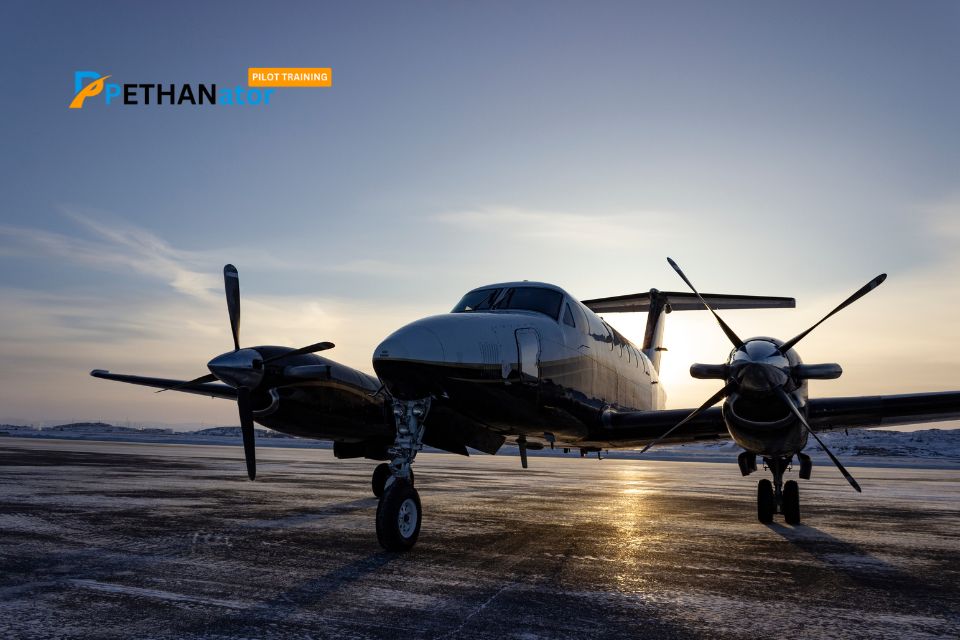
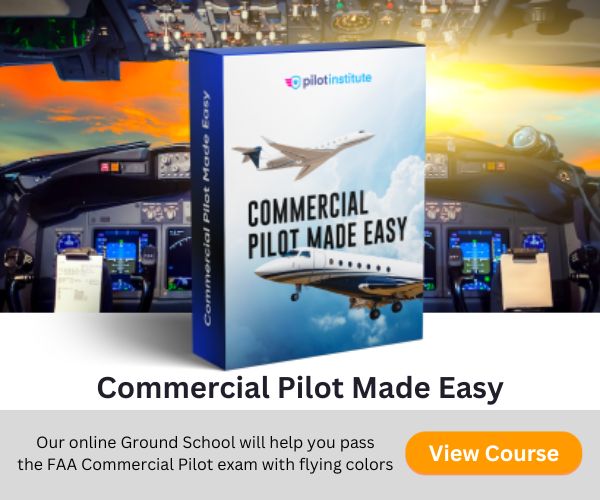

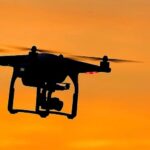
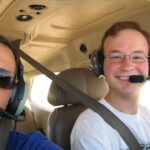
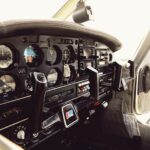

Leave a Reply